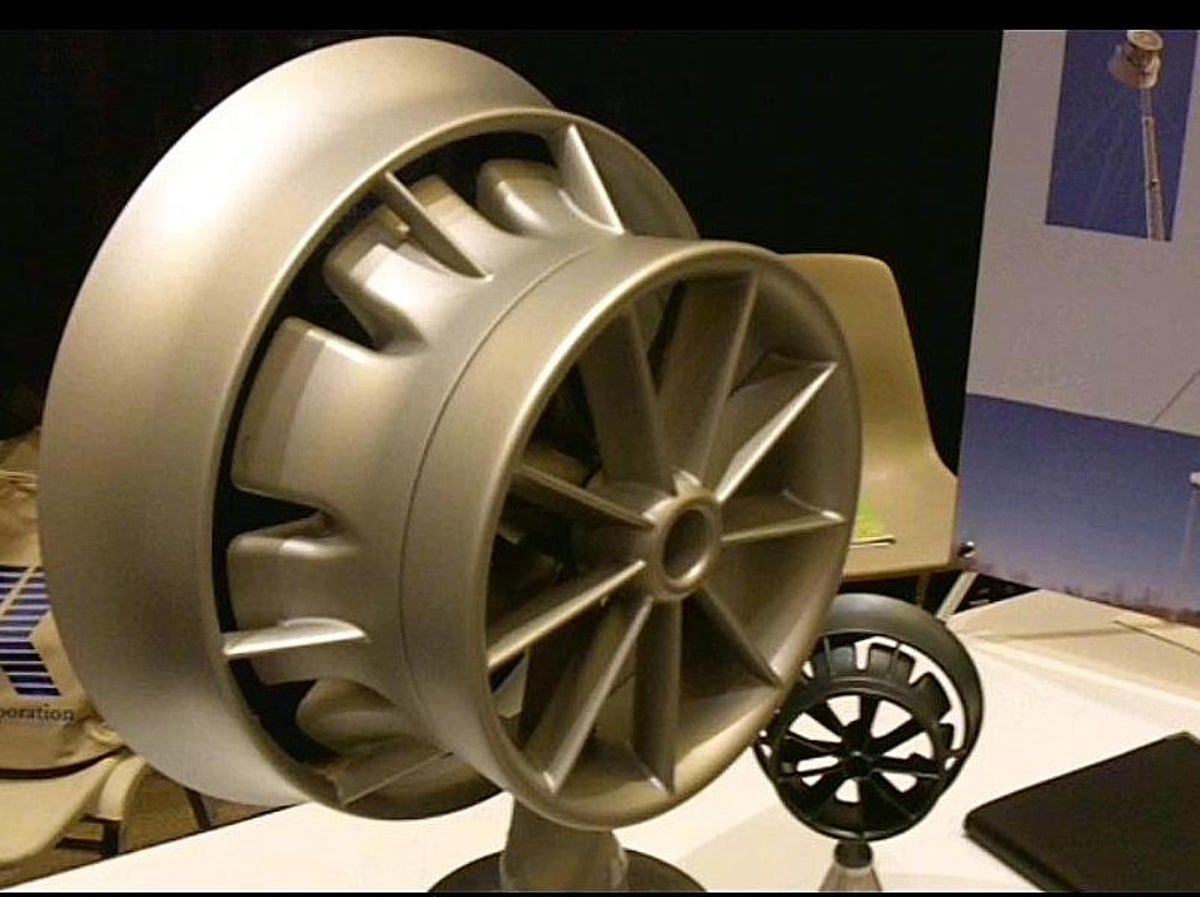Looking for a clean-energy home run (photos)
The ARPA-E agency category was funded last year to promote research in clean-energy technologies. Here's a sampling of companies who exhibited this week at the ARPA-E Summit and are seeking, or have already received, government grants. </p>

FloDesign wind prototype
The Advanced Research Projects Agency-Energy was funded last year to promote research in clean-energy technologies. The following is a sampling of companies who exhibited this week at the ARPA-E Summit and are seeking, or have already received, government grants.
FloDesign Wind Turbines has already received a Department of Energy grant to further develop a wind turbine that uses principles of jet engines to improve turbine performance. Pictured here is a model of the turbine that the company says can be used as part of wind farms. The company last month raised $34.5 million and hired CEO Lars Andersen, who was last head of operations in China for Danish wind turbine maker Vestas.
MTPV makes juice from heat
You've heard of solar photovoltaic panels that convert sunlight into electricity. Start-up MTPV, which was spun out of the Massachusetts Institute of Technology, is seeking to commercialize a technology for converting heat into electricity. The idea is to use waste heat from industrial processes, such as making glass or steel, to make electricity, according to company executives.
Pictured here is a prototype thermophotovoltaic system that uses a chip sandwiched with a traditional solar cell. Heat makes one layer "glow" electromagnetic energy that is then converted into electricity using a photovoltaic cell, according to the company.
This is a solar panel
Xtreme Energetics is building a solar concentrator that uses glass to concentrate light onto a solar cell to boost the output. The company has a deal with Hewlett-Packard to license HP's transparent transistors in its product.
It is now trying to raise money to refine the solar concentrator design and is seeking government research funding for a separate project to make with a concentrator without the need for a solar cell, according to company executives.
Makani high wind power
Makani Power, which is funded by Google.org, is developing a system for capturing wind energy at high altitudes. The vision is to put 35-meter-long tethered blades like this one (only the top is visible) only slightly higher than land wind turbines, said CEO Corwin Hardham. Using a "kite" approach provides more area to deploy wind power devices while using less material, he said.
Hydrogen storage on a disk
One of the biggest challenges to fuel cell vehicles is storing hydrogen which, when fed through a fuel cell, will make electricity to move a car. Plasma Kinetics is looking for funding to further develop a system that uses disks made mostly from magnesium to store hydrogen molecules.
About 10,000 of these disks, which would take up about as much space as a car back seat, would allow for a driving range of over 200 miles, according to Executive Vice President of Research and Development Paul Smith. The hydrogen would be removed from the disks using lasers, he said.
Solid state storage
Is this the battery of the future? Planar Energy, based in Orlando, Fla., is developing a method for manufacturing batteries from thin metal films, which does away with the traditional liquid electrolyte. The company's manufacturing process essentially spray-paints battery components, allowing for smaller size and lower cost because less material is used, according to company CEO Scott Faris.
Nano material for ultracapacitors
One company working on storage that has received a DOE research grant is FastCap Systems, another spin-out from the Massachusetts Institute of Technology.
Rather than seek to improve batteries for energy storage, FastCap Systems and other companies are working on ultracapacitors. These storage devices can't hold as much electrical energy as batteries, but they are able to rapidly discharge and they last longer than chemical batteries. FastCap Systems' design uses a "shag carpet" of nanotubes to store energy placed on top of a conductive substrate.
Compressing wind power underground
One of the biggest challenges facing renewable energy is making it "dispatchable," or available on demand. This is where storage comes in. General Compression, which raised $17 million last month, has designed a system that compresses air using wind turbines and pumps it underground. When power is needed, the compressed underground air is released into a gas turbine to make electricity.

